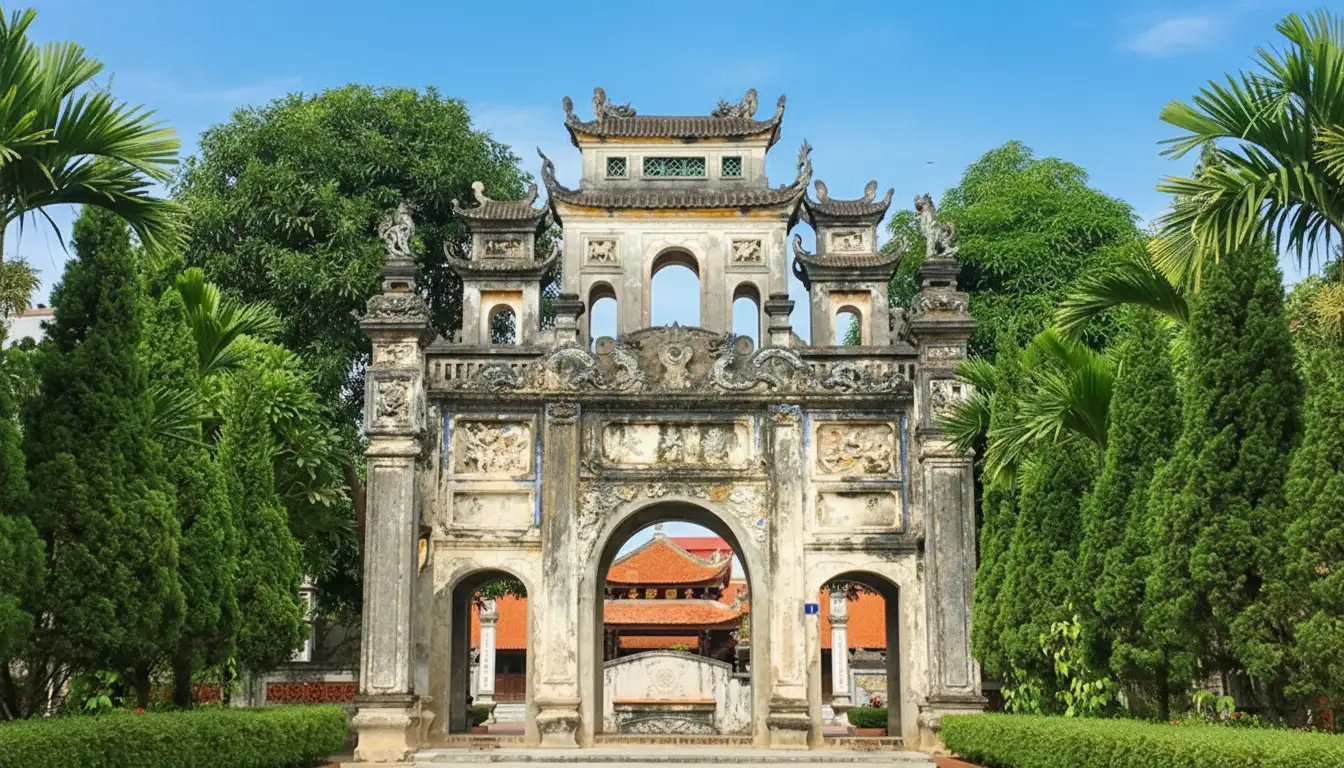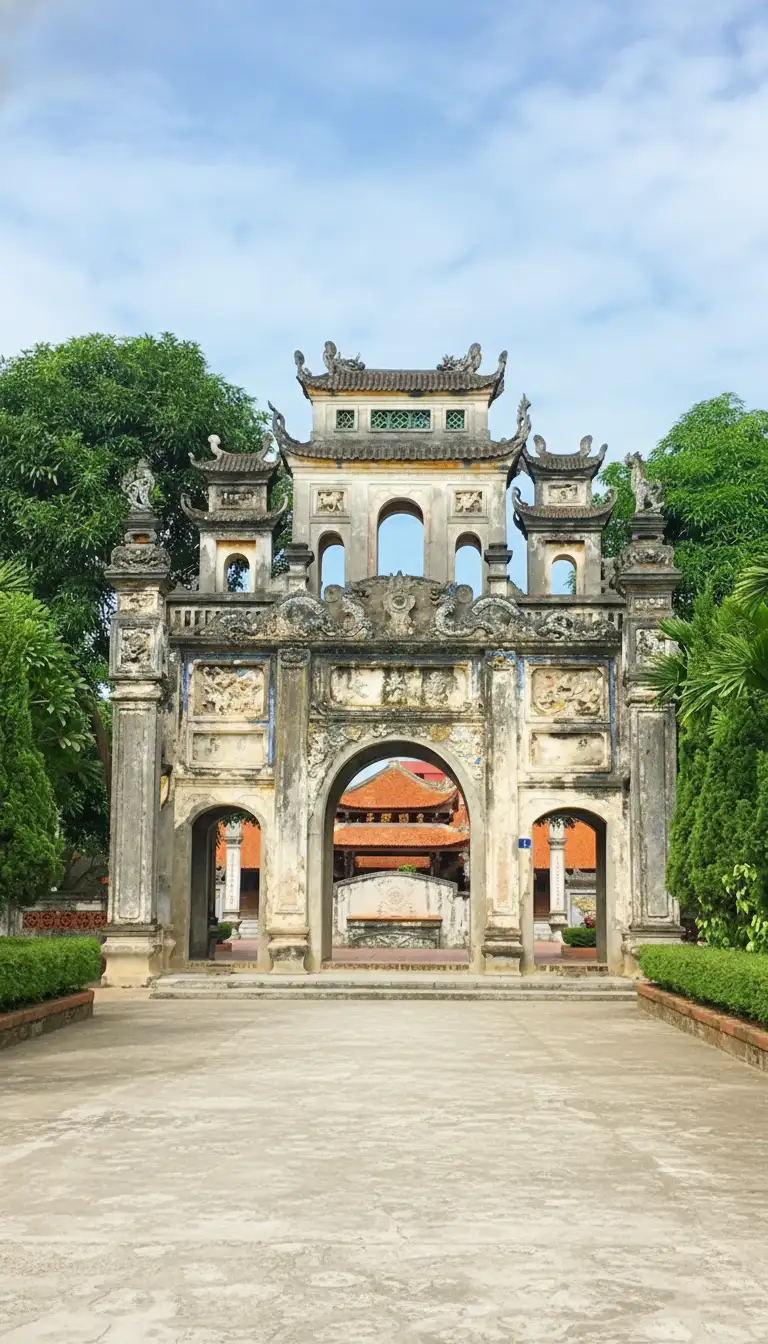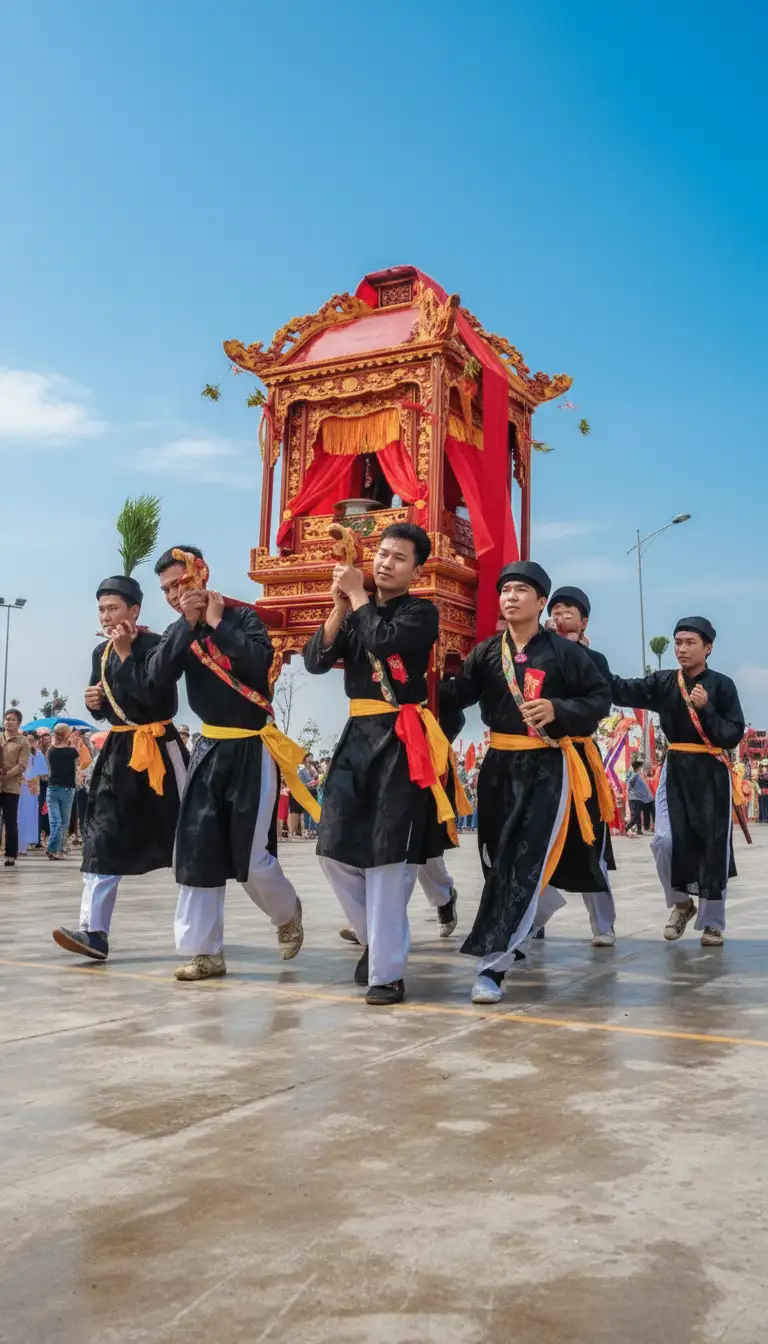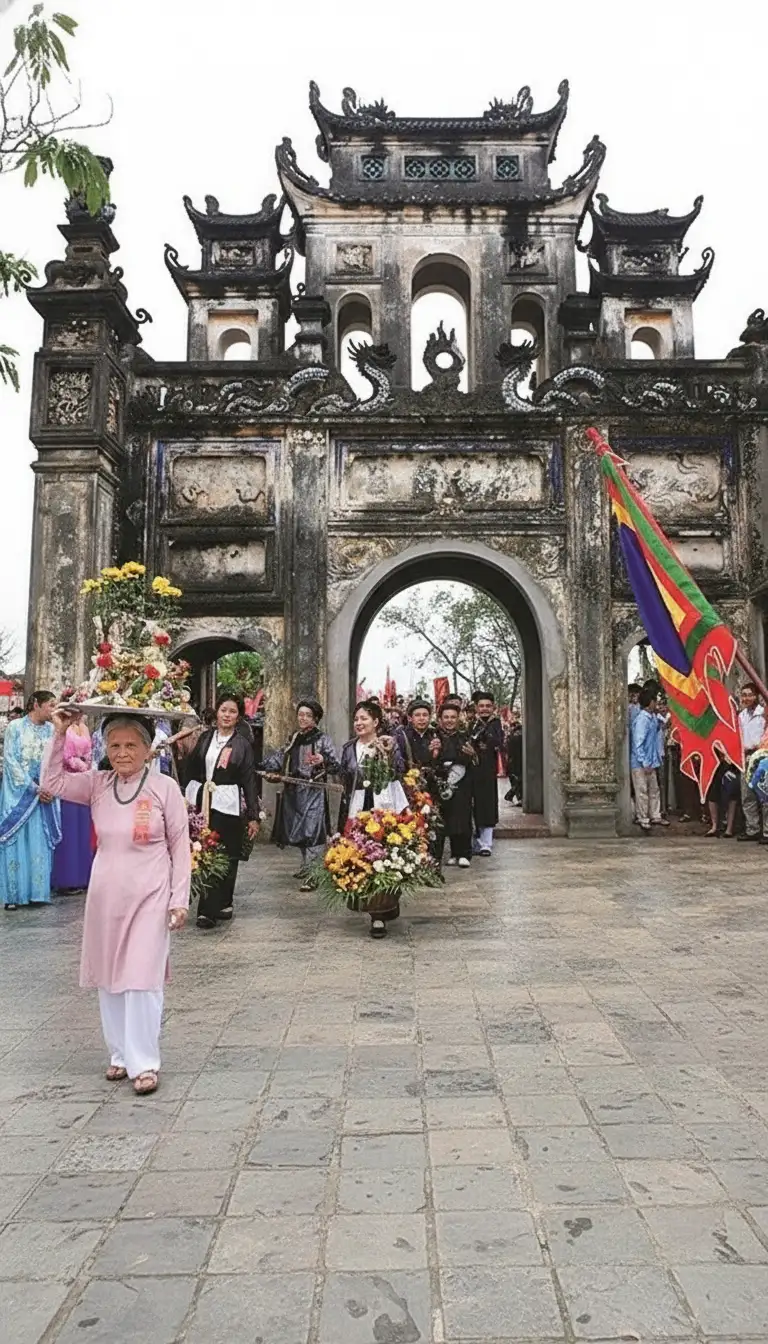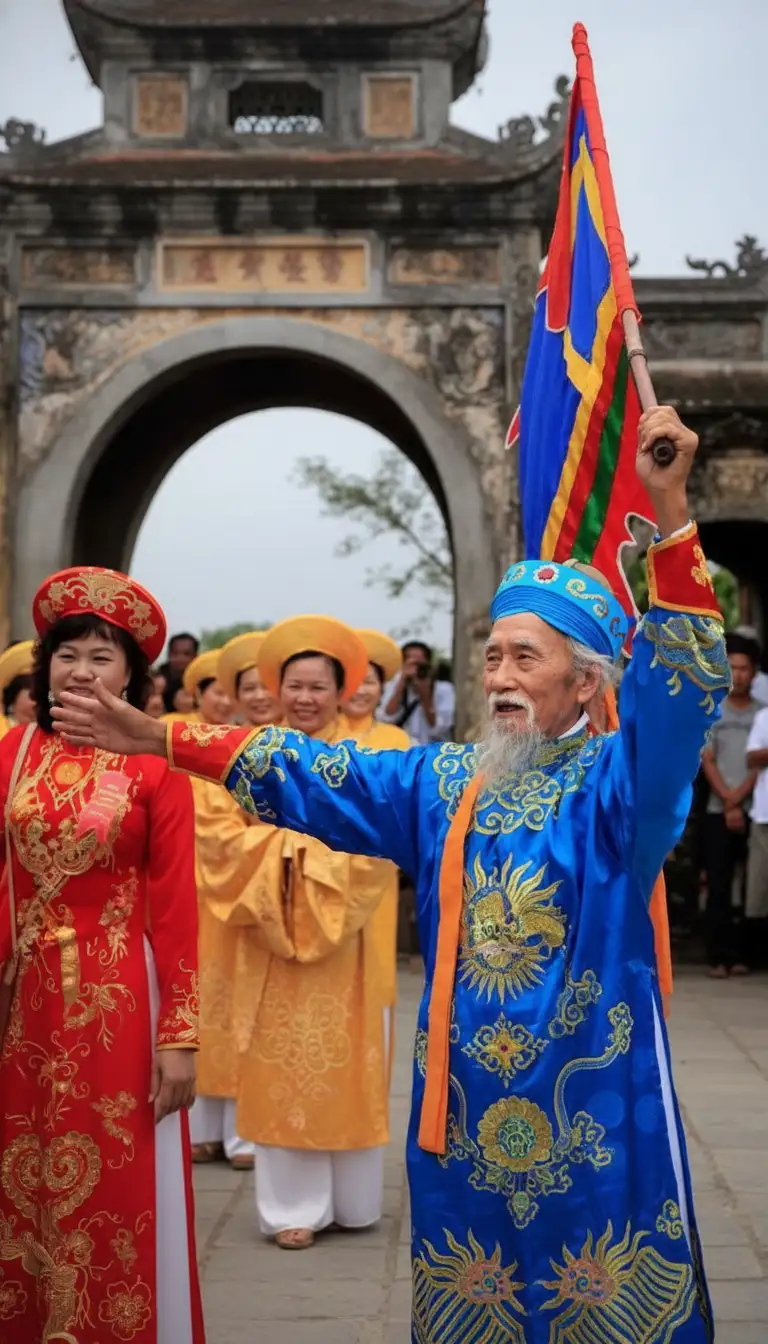Quick Facts
| Data Field (Title) | Content | Icon/Note |
|---|---|---|
| Official Vietnamese Name | Lễ hội Rắn Lệ Mật | The Lệ Mật Snake Festival. |
| Location | Lệ Mật Village, Việt Hưng Ward, Long Biên District, Hanoi, Vietnam. | Located about 7 km northeast of Hanoi's Old Quarter. |
| Date | 20th to 24th days of the 3rd Lunar Month (Main Day: 23rd) | Typically falls in April or May on the Western calendar. |
| Objects of Worship | Hoàng family's Tutelary God (Thành Hoàng), a hero credited with saving a princess and establishing new settlements. | The festival celebrates the village's founder and its unique snake-related heritage. |
| Village Heritage | Lệ Mật is known as the "Snake Village" of Vietnam, famous for snake catching, breeding, and cuisine. |
I. Overview and Foundational Legend
The Hero and the Serpent
The Lệ Mật Snake Festival is a unique cultural and religious event that honors the village’s tutelary god and celebrates Lệ Mật’s centuries-old tradition as a center for snake handling and expertise.
The festival is built upon a heroic legend from the Lý Dynasty (11th century):
The Rescue: While on a boat cruise on the Duong River (an ancient section of the Red River), the daughter of King Lý Thái Tông was threatened or captured by a huge, snake-shaped water monster (Giảo Long).
The Hero: A brave young man from Lệ Mật, a fisherman named Hoàng, jumped into the water, battled the serpent, and succeeded in killing it and either saving the princess or retrieving her body (versions vary).
The Reward: Hoàng refused riches and titles, instead asking the King for permission to lead his fellow poor villagers to reclaim and settle the marshy, uncultivated land west of the Thăng Long (Hanoi) citadel. This endeavor established 13 prosperous settlements, and upon his death, Hoàng was deified and worshipped as the village’s tutelary god.
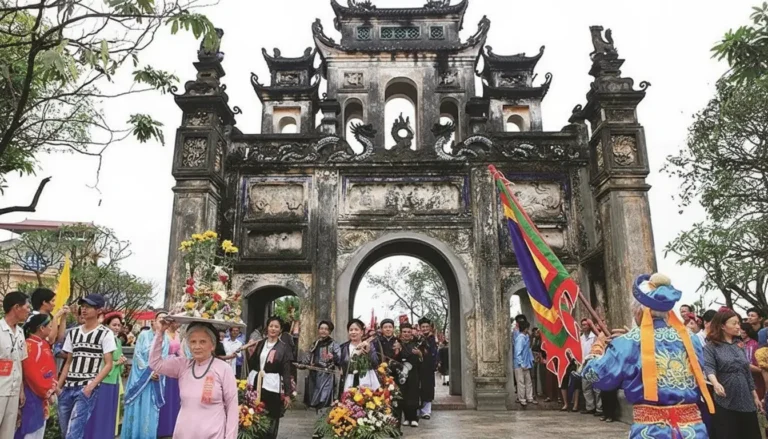
II. Festival Activities and Rituals
The Lệ Mật Festival is a colorful and dynamic event that features several distinctive rites.
1. The Water Offering and Fishing Ritual
Water Procession: The festival commences with a solemn Holy Water Procession where villagers fetch sacred water from the village well or a pond. The water is placed in a jar on a palanquin and carried to the communal temple to be used in worship, symbolizing the purification and lifeblood of the community.
Fish Offering (Đả Ngư): Thirteen young men, representing the 13 settlements founded by the hero, perform the ritual of catching a large carp from the village well. This fish is placed on a tray, covered with a red cloth, and presented as an offering to the tutelary god.
2. The Snake Killing Dance (Diệt Giảo Long)
This is the most famous and spectacular part of the festival—one of the Ten Ancient Dances of the former imperial capital of Thăng Long.
The Performance: The dance dramatically re-enacts the legend of Hoàng battling and killing the monstrous serpent.
The Serpent: A gigantic, elaborate, and lifelike serpent puppet, often spanning over 10 meters long and built on a flexible bamboo frame covered in cloth, is maneuvered by several young villagers.
The Hero’s Triumph: A main dancer, dressed in red armor and wielding a spear, performs a fierce dance around the monster, culminating in the symbolic “killing” of the Giảo Long, set to the vibrant sounds of drums and cymbals. This performance symbolizes the triumph of good over evil, bravery, and the exorcism of bad luck.
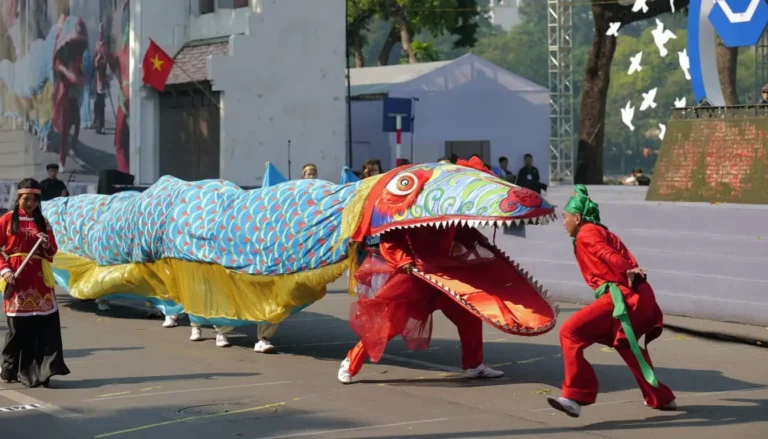
III. Visitor Experience and Village Tradition
| Guide Field | Details |
|---|---|
| Traditional Trade | The festival reinforces Lệ Mật’s reputation as the "Snake Village," where the tradition of snake catching and breeding has been passed down for centuries. |
| Culinary Experience | Lệ Mật is a destination for adventurous food enthusiasts seeking unique snake cuisine. Restaurants offer multi-course feasts of snake meat prepared in various ways (grilled, stir-fried, stewed) and snake wine (infused with snake bile and blood, believed to boost vitality). |
| Atmosphere | The village, just outside Hanoi, offers a glimpse into traditional Northern Vietnamese rural life, combined with a thrilling and unique cultural performance during the festival period. |
| Note for Tourists | The snake-related activities are steeped in cultural and medicinal tradition. While visitors are encouraged to be open-minded, they should be aware of the nature of the cuisine and the ethical debates surrounding it. |
